View current page
...more recent posts
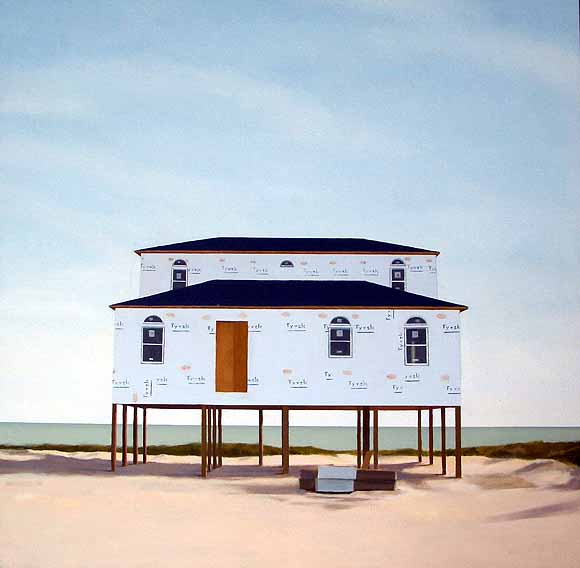
Below are some raw notes towards the essay I'm writing on Kara Hammond's work. These will change as as the writing is fleshed out. The image above is Tyvek Beach House, oil on canvas, 2005.
Kara Hammond describes the imagery in her paintings and drawings as "scenes of everyday human existence." Thatís as good a summary as youíre likely to find of this straightforward but strangely varied collection of suburban homes, airport buildings, storage sheds, space vehicles, office complexes, freeway ramps, trash receptacles, outdoor toilets, and other artifacts of the consumer-inflected landscape.
The work is "post-" quite a few things, to use a bit of art historical jargon. They are post-commodity art in the sense that they are not preaching about humankindís intrusions into the natural environment but merely recording them as factually as possible. They are post-appropriation in that the recording more or less takes for granted artís manipulation of signs, and the curious relationships that arise when painterly subjectivity meets the photographic record.
But the term post- usually implies a residue of what came before, and one still sees a skeptical, theoretical bent at work in these placid, some might say traditional-looking subjects. Images as reductive and open-ended as haikus on the individual level reveal their critical drift when seen cumulatively.
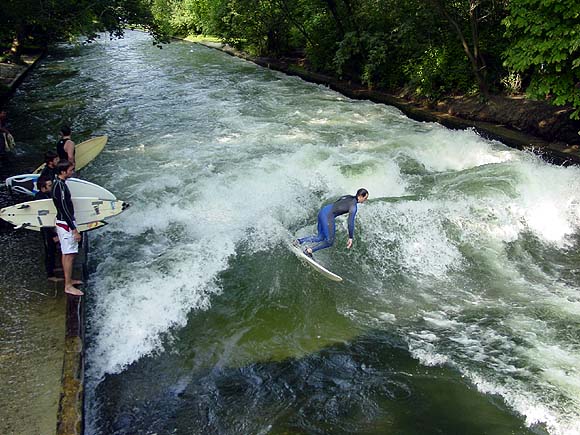
Just got back from an inland surfing tour and...not really, I've been vacationing in Munich, Germany, and will have a few more pics up soon. The one above depicts the usual gang of nuts who surf the big standing wave of river water that perpetually flows near the entrance to the English Garden.
I'm taking a vacation from blogging for a few days. Posting will be light to nonexistent from now to August 2. In the meantime, as the Daily Howler says, "please visit our incomparable archives."
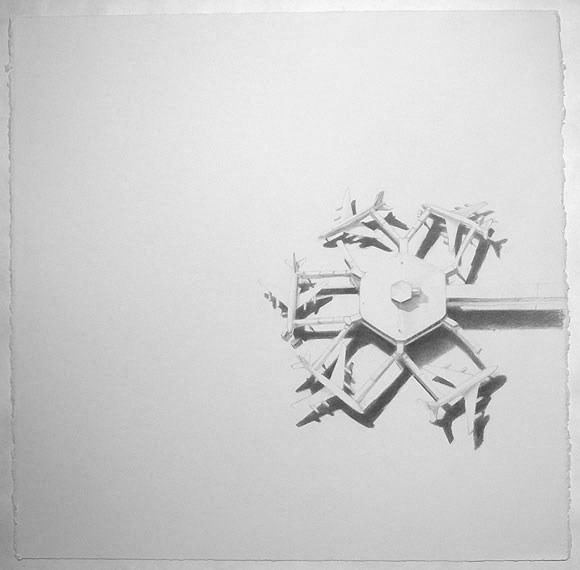
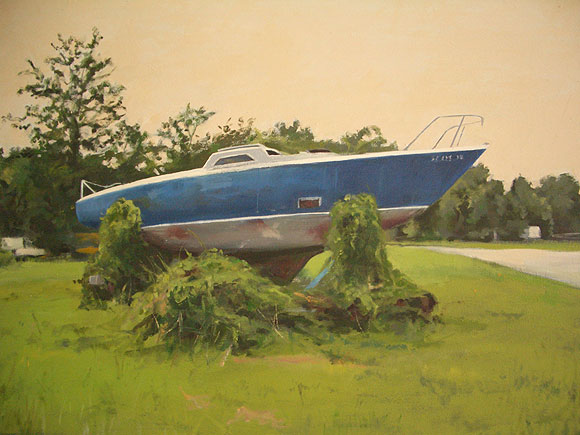
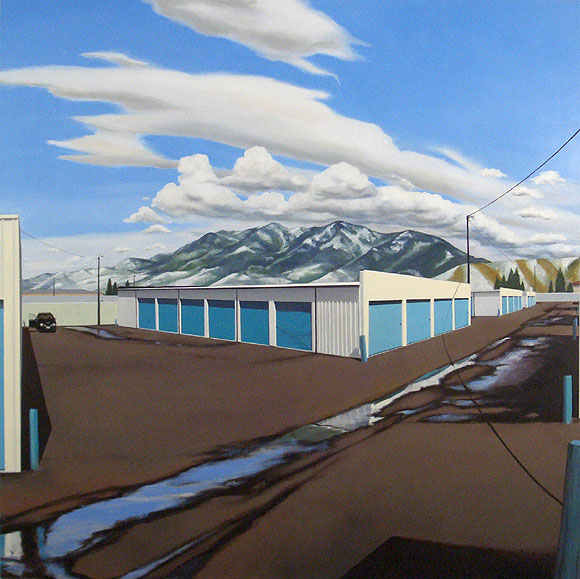
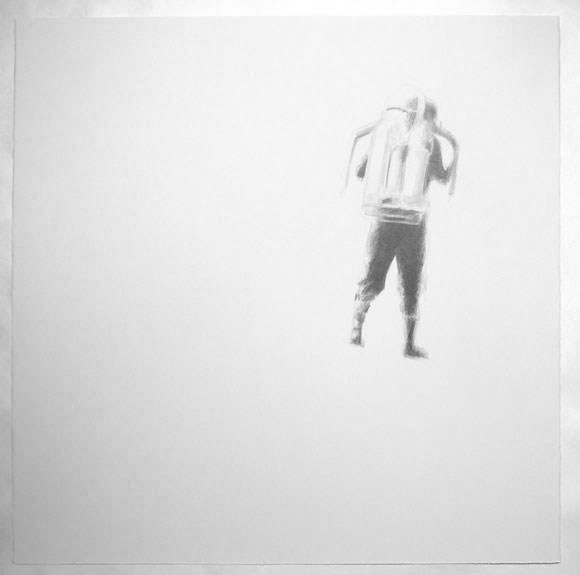
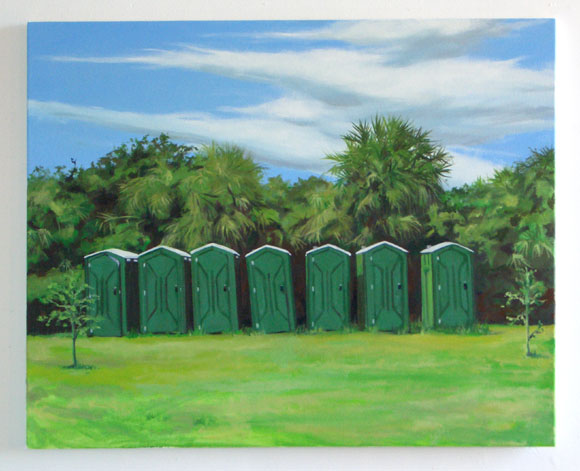
Five by Kara Hammond, an artist who showed and worked in New York for many years and recently relocated to South Carolina, where she is teaching. I'm writing an essay about her work and am using the blog as my notepad. Top to bottom (these are her descriptions accompanying the photos she sent--actual titles, dimensions, etc. pending): Airport Roundabout, Boat for Sale, Bozeman Storage Units, Jetpack (In Progress), Tybee Island Toilets. Some earlier writing on the artist is here.
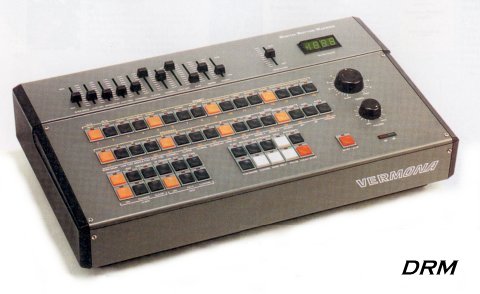
"1987" [4.7 MB .mp3].
The rhythms in this song consist of sampled (then altered and resequenced) beats from the above drum machine, which was originally manufactured in the titular year. (Just as an aside, as mentioned earlier, this blog has adopted 1987 as its foster year. See past references here, although one unrelated one came up because 1987 was in the URL for a link.)
Other songs written and posted in July, but not related to 1987:
"Drum Reverie" [mp3 removed]
"Mouse Party" [mp3 removed]
"Audrey Zapp" (lean version) [mp3 removed]
"Nine Inch Bells" [mp3 removed]
"Cryptkicker" [mp3 removed]
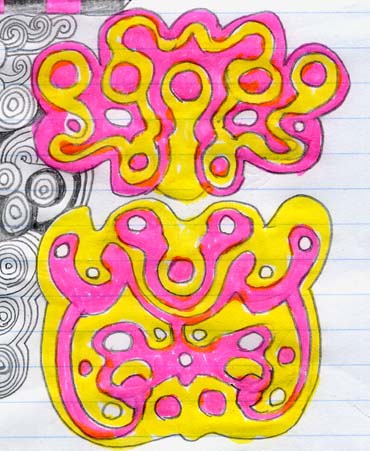
My photo of LoVid is used in a brochure for upcoming events at the Kitchen; below is a scanned detail. [Update: the curator, Nick Hallett, says it's a draft and will change considerably.] The image originally appeared here on this blog as part of its ongoing experiment in citizen journalism and public multitasking.
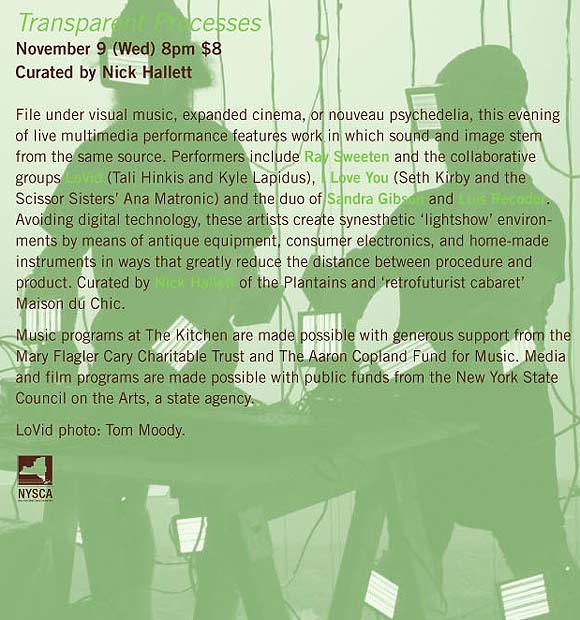
Steven Spielberg's AI and Minority Report were dreadful but War of the Worlds ain't half bad. It's terse, moves like the wind, and tells its tale almost entirely in pictures, like an old silent film--you could watch it on a plane with no headphones and know exactly what is going on every minute, even if you'd never somehow encountered the Wells story. Critics mostly like this update, but a quick glance through the reviews at rottentomatoes.com pulled up a couple of debatable points:
Spielberg gives his pulp material grandeur because he is an A-list director. No, he is a pulp director with pretensions to A material, adding films such as Schindler's List, Empire of the Sun, and Amistad to his shark and dinosaur canon. WotW works because it's pure sensationalism. And like the best B-movies, it has that undertow of other stories being told. Like, who is scarier to the children in the movie, the bloodsucking aliens or the angry, controlling absentee dad fate sticks them with after the apocalypse? Or, how close are we to the kind of savagery depicted in the film, where a mob attacks an SUV that is the only set of working wheels on the road?
You won't remember anything in WotW the next day. Beg to differ--that klaxon horn that heralds the arrival of the alien tripods still has me shivering. Because the movie is a silent film (with explosions) I can replay almost all of it in my mind as a series of images: Cruise struggling to keep his son from chasing the monsters while twenty feet away a well-intentioned couple tries to whisk his daughter away, thinking she's an abandoned child; the guy tearing through the SUV's window glass with his bare hands (but why is he black--pandering to suburban racial angst? Spielberg, meet George Romero); Cruise and Tim Robbins silently fighting over a shotgun while an alien roto-rooter probes the basement where they are hiding; Cruise yelling at his kids again and again.
Michael Atkinson of the Voice is right that the 9/11 references (e.g., walls dense with flyers describing the missing) are a bit much. And it wouldn't be a Spielberg movie without stuff thrown in for no reason other than to be "cinematic." [Spoilers] For example, people are kept in cages riding under the heads of the towering alien "walkers"; periodically a snake-thing comes out of a rubber anus and grabs a human, presumably for a snack. Yet when it comes time to use human blood as fertilizer for the monsters' crops, the victims are dropped ten stories to the ground, a snake thing comes down and stabs them and sucks their blood ten stories back up into the tripod, where it is then sprayed in a thin mist across the landscape. But why all this dropping and long-distance sucking when the humans are already in cages next to the sprayers? Because a body falling towards the camera from a great height is "visually exciting." In the director's defense, stuff like this also makes the movie more irrationally dreamlike and disturbing.
